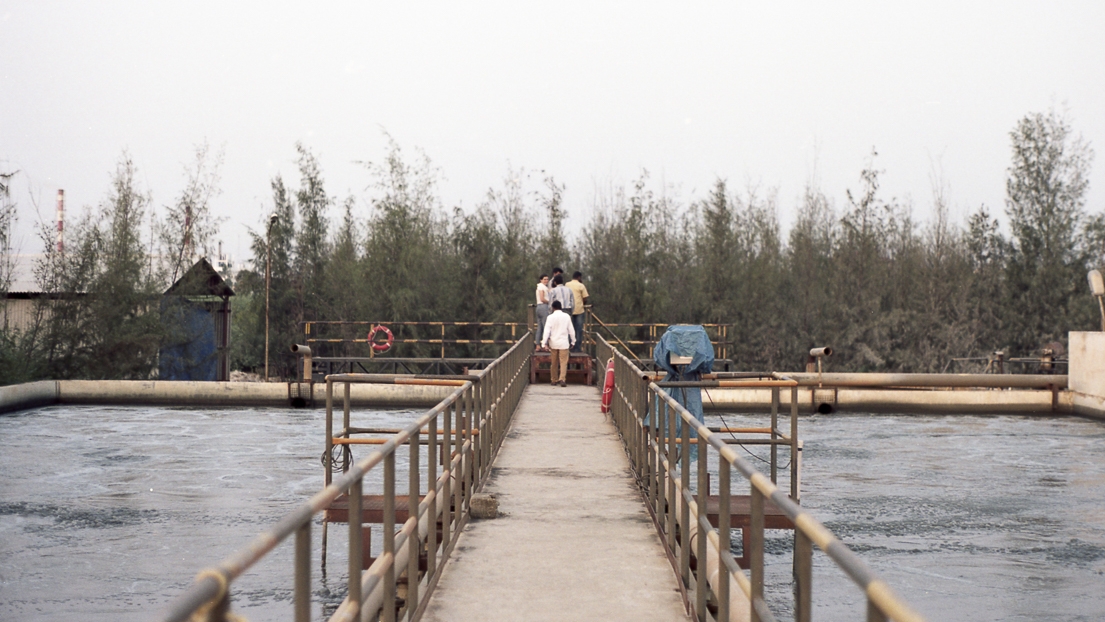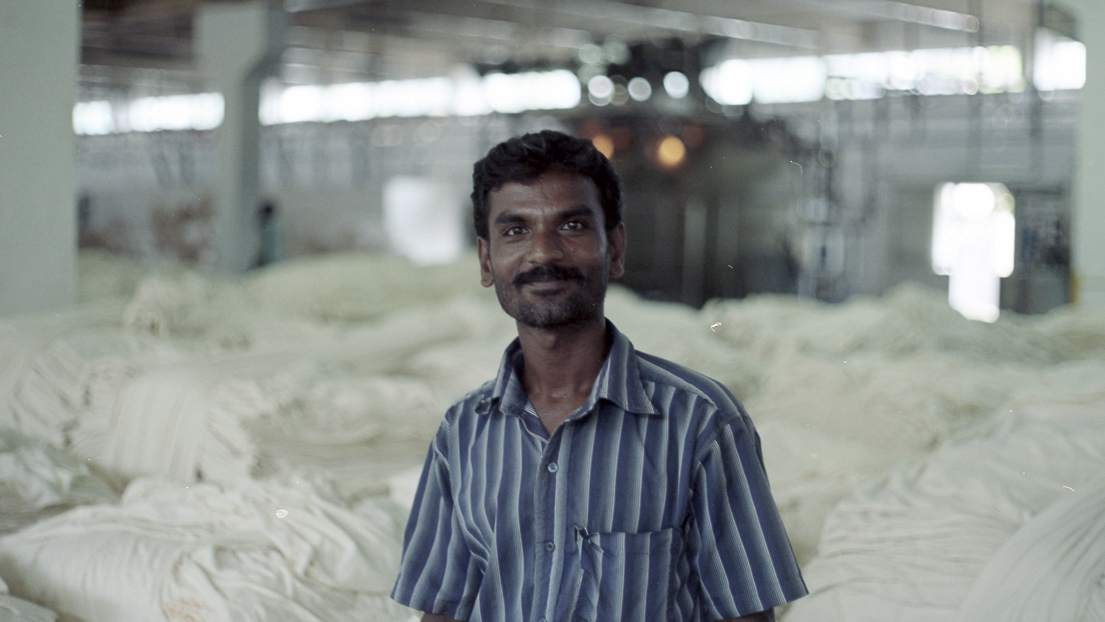6. DYEING & FINISHING
Traditionally dyeing was always done using natural dyes such as indigo, turmeric and lichen, but as things became more mechanised chemicals were used or added to act as a mordant to stop the dye running when washed and to be able to work with larger quantities.
Up until 2011, dye houses in India were pouring the dye water into the rivers - polluting the drinking water, contaminating fields & destroying crops. In places of drought and agriculture this is devastating. This act is now banned and all dye houses have to recycle their dye water.
Alongside the dye house in Tirupur, we also visited the waste dye water unit where dye water is taken from the dye house via tubes to be cleaned and recycled. The pools of dye water are initially used as solar panels to power the entire unit. The water from the pools then goes through multiple filtering processes, to produce water clean enough to drink. 95% of the liquid is reused by the dye house and the 5% of the remaining material that is left forms a cement cake, which is used as a building material. It was an impressive process to witness.






